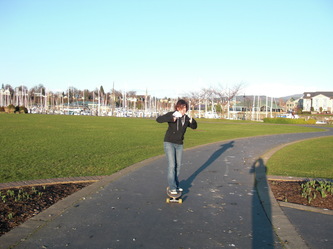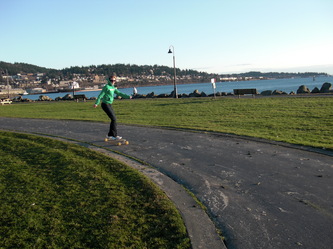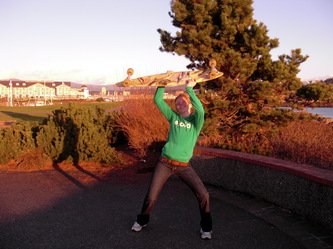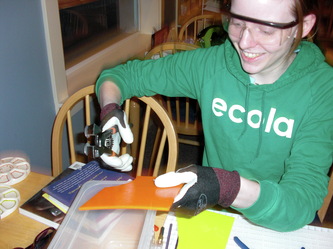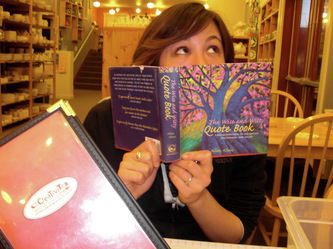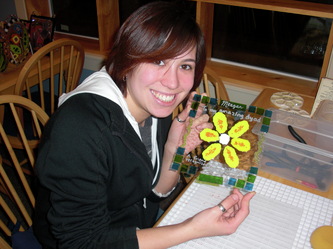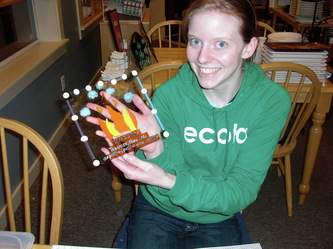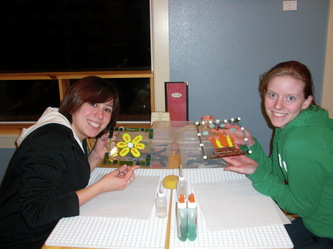Systems and Human Services
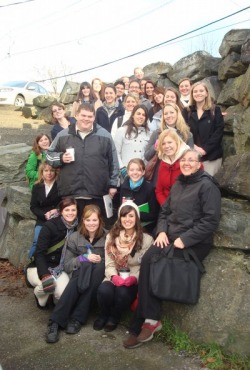
Systems are defined as “ a set of connected things forming a complex whole.” What this means to me as a Human Services professional is that each and every day I am working within a web of systems and these systems want to perpetuate themselves. If I want to create change I must understand the systems I am working with. Human Services is itself a system because of this I need to have a broad knowledge of where Human Services began and where it is heading.
The historical roots of Human Services can be seen throughout history: social movements, legislation, or communities coming together to change and challenge social norms. The U.S. Department of Health and Human Services website has an excellent timeline of major events that have occurred in Human Services history (http://www.hhs.gov/about/hhshist.html). These changes have affect the way services are delivered to people. Standard 11 asks that as I student I have an understanding of the historical context of the field (CSHSE Standards). In Introduction to Human Services, I examined the issue of domestic violence; I looked at the Women’s Rights Movement and what it meant to the topic of domestic violence issue (See Appendix A). This paper was important to my education because I later got to use that knowledge while working with Womencare Shelter.
Points e, f, and g in Standard 11 require the student to understand how government and economics affect the Human Services System (CSHSE Standards). My final in Human Services Professionals and Organizational Systems, I answered a series of questions that allowed me to display my knowledge of the how political systems interact with different areas in Human Services. By gathering information from both of these classes gave me context to later examine systems that affect me and the systems I will affect.
During my educational career I have taken six core classes. These core classes have built upon each other to help me gain an understanding of how different systems interact. Standard 12 addresses seven areas that the curriculum needed to cover to help me become a well-rounded Human Service professional (CSHSE Standards). It began with my own personal or individual system how my values and beliefs shape who I am personally. In Human Services Professionals and Personal Systems, I gave a presentation called “Who am I?” It was a representation of who I was and what outer systems affected my personal system (See Appendix D). My perspective came from the saying, “You are what you eat.” I adapted the food pyramid to represent how different systems that affect my personal system. Just like the food pyramid there were six sections; each one was in proportion to how much I felt they affected me. The things placed on the bottom of the pyramid are unchangeable such as my faith, personality type, and things that bring me joy. The next two building blocks were my personal history and relationships. The people and experience that have helped shape the person I am today. This covers one of the other systems addressed in Standard 12h, which is family. Family does not always mean one’s nuclear family but those who have raised or shaped a person’s life. I have had many people who are not genetically related to me, that are very much a part of my family system. The two systems just below the top piece are my education and professional development. At the time these were systems that had just been formed and where very small in comparison to the other blocks; however, that has changed. Over the past two year I have gained much more education and professionalism – through being in classes and by doing internships in the community. The top of the pyramid represented the future. This is where my goals, hopes, and dreams are all stored. Although my history and where I’ve come from shapes much of who I am today, there is still the unknown piece that pushes me to continue learning and growing.
The interpersonal system was explored through the dyadic relationship. I was fortunate to be placed with Nicole Amor. We were first asked to explore a topic related to the interpersonal system. Although much of our time was spent working on a presentation about passive aggressive behaviors, the true learning came from the time we spent interacting. The dyadic relationship is important to role of Human Services as it represents the one-on-one relationship. The final portion of our project was to spend a few hours together – not working on homework – but just getting to know each other (See Dyad Experience at bottom of page). We decided to try long boarding – something Nicole had never done and I had only tried a few times. It was fun to watch each other learn. We then went to CreativiTea where we created glass-fused plates for each other (See Appendix F). Although dual relationships are not encouraged because we were in a school setting I felt developing a friendship was not inappropriate. The time we spent together taught me that being present with a person are as important as the services you provide them.
Spring quarter 2009 was spent learning about groups. This was the most difficult quarter for me. We were split into groups and asked to design a small, group-oriented program. As the quarter began we got right to work. Within the first weeks we had what our group would be and moved right into planning the small details of the assignment. Two weeks before the project was due, one of our group members announced that she did not like our program and was not sure she could be a part of it. It caught the rest of the group off guard. As much of the grade for this assignment was based on how the group interacted we attempted to work things out. However, after a few meetings it became apparent that there was not going to be a solution. So the next step was to decide how we would present each person’s point of view. We ultimately decided to do a confessional. We presented what we had of the program and then the whole group left the room. One at a time each person went back in and presented their perspective to the class without the other group members in the room (See Appendix G). To this day, I do not know what the other group members said about the project. Presenting failure to a room full of people was extremely hard but afterwards our teacher commended us for being honest and courageous. Standard 17 applies greatly to this situations; I learned not only how to deal with conflict but that it is important to understand and clarify expectations from the beginning (CSHSE Standard 17a).
For the past three quarters I have been learning about a more global view of Human Services see the organizational, community, and societal perspectives. In addition to classes, I also interned for Womencare Shelter during the fall of 2009 (CSHSE Standard 21). For my organizational paper, I reviewed the way Womencare had grown as an agency (See Appendix H). I had a great knowledge of the organization as I had attended 30 hours of training around domestic violence and the way Womencare chose to support women coming out of that situation. Standard 13 asks that a student be exposed to conditions that promote or limit human function (CSHSE Standards). Spending 30 hours learning through personal accounts, guided activities, videos and other materials, gives you a large knowledge how this experience might effect a person’s functioning (See Appendix T). Working with the women allows one to gain personal experience of the process; supporting a woman to finding housing, dealing with legal issues, taking care of themselves and children, and so much more, really showed me how many barriers someone can face but also how resilient a person can be. Combining both the organizational view and the perspective from working directly with the women gave me a much better picture of what an agency looks like from a big picture view.
The final portion of Standard 12 is to look at the community and societal systems (CSHSE Standards). During winter quarter of 2010, I worked with a group looking at the Happy Valley Neighborhood – which is a system inside a larger community system. We looked at the neighborhood through a strength-based approach; the assets of the neighborhood, what people felt about the community and what areas we felt could be improved on. All of our information was then displayed in a photo essay (See Appendix I). For this project each of the group members completed interviews with community members. I chose to interview the principal from Happy Valley Elementary. I found this interview extremely informative. I found out that in her opinion biggest issue facing the neighborhood was not having a safe walking route for the students to get from home to school. The community recognized the need and was in the process of applying for a grant to deal with the problem. In this case my client was the whole neighborhood, often in the human service program we discuss that our client is the best expert on what their needs are and this community was very aware of what it needed.
I feel that if you had asked me my first quarter in the Human Service program what a system was and how it affected society, I would have had no answer. Throughout the past six quarters, I have gained knowledge of different systems and how they affect each other. Now as a professional my goal is to create positive change with each system I interact with.
The historical roots of Human Services can be seen throughout history: social movements, legislation, or communities coming together to change and challenge social norms. The U.S. Department of Health and Human Services website has an excellent timeline of major events that have occurred in Human Services history (http://www.hhs.gov/about/hhshist.html). These changes have affect the way services are delivered to people. Standard 11 asks that as I student I have an understanding of the historical context of the field (CSHSE Standards). In Introduction to Human Services, I examined the issue of domestic violence; I looked at the Women’s Rights Movement and what it meant to the topic of domestic violence issue (See Appendix A). This paper was important to my education because I later got to use that knowledge while working with Womencare Shelter.
Points e, f, and g in Standard 11 require the student to understand how government and economics affect the Human Services System (CSHSE Standards). My final in Human Services Professionals and Organizational Systems, I answered a series of questions that allowed me to display my knowledge of the how political systems interact with different areas in Human Services. By gathering information from both of these classes gave me context to later examine systems that affect me and the systems I will affect.
During my educational career I have taken six core classes. These core classes have built upon each other to help me gain an understanding of how different systems interact. Standard 12 addresses seven areas that the curriculum needed to cover to help me become a well-rounded Human Service professional (CSHSE Standards). It began with my own personal or individual system how my values and beliefs shape who I am personally. In Human Services Professionals and Personal Systems, I gave a presentation called “Who am I?” It was a representation of who I was and what outer systems affected my personal system (See Appendix D). My perspective came from the saying, “You are what you eat.” I adapted the food pyramid to represent how different systems that affect my personal system. Just like the food pyramid there were six sections; each one was in proportion to how much I felt they affected me. The things placed on the bottom of the pyramid are unchangeable such as my faith, personality type, and things that bring me joy. The next two building blocks were my personal history and relationships. The people and experience that have helped shape the person I am today. This covers one of the other systems addressed in Standard 12h, which is family. Family does not always mean one’s nuclear family but those who have raised or shaped a person’s life. I have had many people who are not genetically related to me, that are very much a part of my family system. The two systems just below the top piece are my education and professional development. At the time these were systems that had just been formed and where very small in comparison to the other blocks; however, that has changed. Over the past two year I have gained much more education and professionalism – through being in classes and by doing internships in the community. The top of the pyramid represented the future. This is where my goals, hopes, and dreams are all stored. Although my history and where I’ve come from shapes much of who I am today, there is still the unknown piece that pushes me to continue learning and growing.
The interpersonal system was explored through the dyadic relationship. I was fortunate to be placed with Nicole Amor. We were first asked to explore a topic related to the interpersonal system. Although much of our time was spent working on a presentation about passive aggressive behaviors, the true learning came from the time we spent interacting. The dyadic relationship is important to role of Human Services as it represents the one-on-one relationship. The final portion of our project was to spend a few hours together – not working on homework – but just getting to know each other (See Dyad Experience at bottom of page). We decided to try long boarding – something Nicole had never done and I had only tried a few times. It was fun to watch each other learn. We then went to CreativiTea where we created glass-fused plates for each other (See Appendix F). Although dual relationships are not encouraged because we were in a school setting I felt developing a friendship was not inappropriate. The time we spent together taught me that being present with a person are as important as the services you provide them.
Spring quarter 2009 was spent learning about groups. This was the most difficult quarter for me. We were split into groups and asked to design a small, group-oriented program. As the quarter began we got right to work. Within the first weeks we had what our group would be and moved right into planning the small details of the assignment. Two weeks before the project was due, one of our group members announced that she did not like our program and was not sure she could be a part of it. It caught the rest of the group off guard. As much of the grade for this assignment was based on how the group interacted we attempted to work things out. However, after a few meetings it became apparent that there was not going to be a solution. So the next step was to decide how we would present each person’s point of view. We ultimately decided to do a confessional. We presented what we had of the program and then the whole group left the room. One at a time each person went back in and presented their perspective to the class without the other group members in the room (See Appendix G). To this day, I do not know what the other group members said about the project. Presenting failure to a room full of people was extremely hard but afterwards our teacher commended us for being honest and courageous. Standard 17 applies greatly to this situations; I learned not only how to deal with conflict but that it is important to understand and clarify expectations from the beginning (CSHSE Standard 17a).
For the past three quarters I have been learning about a more global view of Human Services see the organizational, community, and societal perspectives. In addition to classes, I also interned for Womencare Shelter during the fall of 2009 (CSHSE Standard 21). For my organizational paper, I reviewed the way Womencare had grown as an agency (See Appendix H). I had a great knowledge of the organization as I had attended 30 hours of training around domestic violence and the way Womencare chose to support women coming out of that situation. Standard 13 asks that a student be exposed to conditions that promote or limit human function (CSHSE Standards). Spending 30 hours learning through personal accounts, guided activities, videos and other materials, gives you a large knowledge how this experience might effect a person’s functioning (See Appendix T). Working with the women allows one to gain personal experience of the process; supporting a woman to finding housing, dealing with legal issues, taking care of themselves and children, and so much more, really showed me how many barriers someone can face but also how resilient a person can be. Combining both the organizational view and the perspective from working directly with the women gave me a much better picture of what an agency looks like from a big picture view.
The final portion of Standard 12 is to look at the community and societal systems (CSHSE Standards). During winter quarter of 2010, I worked with a group looking at the Happy Valley Neighborhood – which is a system inside a larger community system. We looked at the neighborhood through a strength-based approach; the assets of the neighborhood, what people felt about the community and what areas we felt could be improved on. All of our information was then displayed in a photo essay (See Appendix I). For this project each of the group members completed interviews with community members. I chose to interview the principal from Happy Valley Elementary. I found this interview extremely informative. I found out that in her opinion biggest issue facing the neighborhood was not having a safe walking route for the students to get from home to school. The community recognized the need and was in the process of applying for a grant to deal with the problem. In this case my client was the whole neighborhood, often in the human service program we discuss that our client is the best expert on what their needs are and this community was very aware of what it needed.
I feel that if you had asked me my first quarter in the Human Service program what a system was and how it affected society, I would have had no answer. Throughout the past six quarters, I have gained knowledge of different systems and how they affect each other. Now as a professional my goal is to create positive change with each system I interact with.
This paper meets Council for Standards in Human Service Education
National Standards: 11, 12, 13, and 21
To see a synopsis of the Standards go to: My Standards Page
To see the full list go to: Council for Standards in Human Service Education Appendix C
National Standards: 11, 12, 13, and 21
To see a synopsis of the Standards go to: My Standards Page
To see the full list go to: Council for Standards in Human Service Education Appendix C
Reference
Council for Standards in Human Service Education. (2009). National standards: Baccalaureate degree in
human services. Retrieved May 19, 2010 from http://www.cshse.org/documents/StandardsBachelor.pdf
Council for Standards in Human Service Education. (2009). National standards: Baccalaureate degree in
human services. Retrieved May 19, 2010 from http://www.cshse.org/documents/StandardsBachelor.pdf
